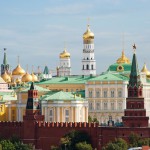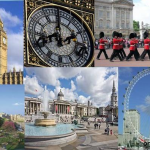The Great Fire of London
The London of the middle of the 17th century was a city of narrow, dirty streets. The streets were so narrow that it was often possible for a person at a window on one side of the street to shake hands with a neighbor on the other side. Rubbish lay piled up in dark comers. It is no wonder that epidemics were common.
The greatest epidemic was the plague which broke out in 1655. It was a sad time for London. Every house in which there were sick people was shut up, no one was allowed to go in or out, and the door of the house was marked with a red cross.
The following year the Great Fire took place. It broke out late on a Saturday night in a street not far from London Bridge. The summer had been dry; a hot east wind was blowing and the fire spread quickly.
The fire burned for five days and destroyed the greater part of the city. But it did the city good, as it cleared away the old wooden houses and the dirty, narrow streets.
A monument near London Bridge still marks the spot where the fire broke out. Sir Christopher Wren, the famous architect of that day, took part in rebuilding the city. Wider streets and brick houses were built. The old church of St.Paul was among the buildings destroyed by the fire. In its place Wren built the present St.Paul’s Cathedral. He lays buried under the roof of his own great work. These words are written on his tomb: “If you want to see his monument, look around”.
rubbish — мусор
it is no wonder — неудивительно
epidemics — эпидемия
common — обычный, часто случающийся
the plague — чума
to break out — возникнуть, разразиться
cross — крест
to spread (spread)— распространяться
to clear away — здесь: to destroy уничтожить
tobury — хоронить
tomb — могила




